

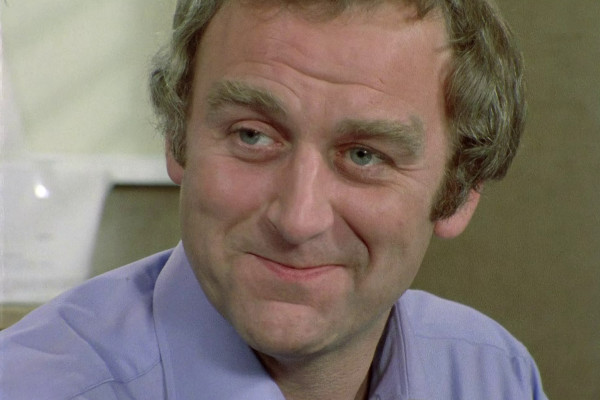
Next month marks forty years since the television movie Regan was aired... the TV movie that effectively became a pilot for the commissioned programme. Join me as I rank the pilot and the entire first series from worst to best...
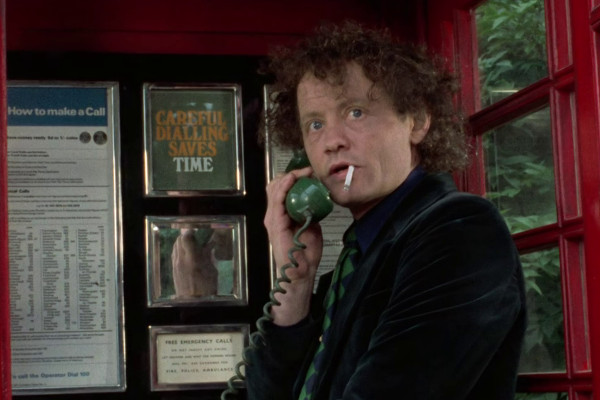
One inescapable fact of The Sweeney is that it is, of course, a product of the 1970s. With this we must accept that John Thaw busts cases wearing flared trousers and shoulder-width lapels, while Dennis Waterman, thin on top, has long ginger hair that makes it looks like he's got a pair of Womble's ears. Drinks are cheap, sexism is not only tolerated but appreciated, and "slags" and "tarts" need to be "nicked". So it is that the series must be watched by disengaging from the modern world, where you have to "buy in" to the show's ethos and remember that, while the villains are often tame and campy by today's standards, this was gritty, groundbreaking TV at the time.
While most of the episodes still hold up despite this, Golden Boy is one where it can't quite pass muster. It features Tinker from Lovejoy as a master criminal, looking like the lovechild of Mick Hucknall and Charlie Drake. He plays a hyper-real crook that seems more at ease in the world of ITC adventure serials, rather than a down-to-Earth copshow. In fact, Dudley Sutton had appeared in Randall and Hopkirk (Deceased), and it's this vibe that's such a bad fit with the regular tone of the series. The plot – a largely unconvincing tale about stolen gold bullion – was writer Martin Hall's only contribution to the programme.
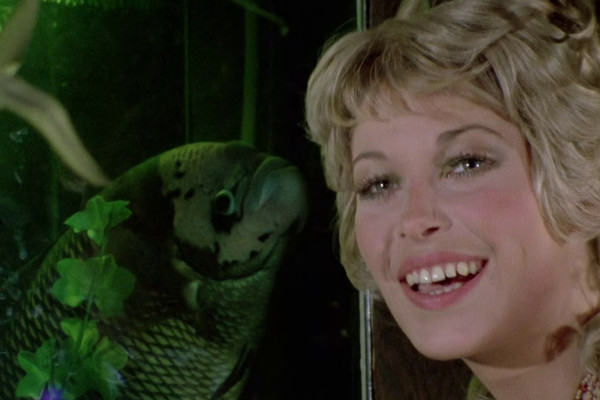
Series one's most misconceived story, where the embittered, hardened Regan suddenly turns into a lovesick schoolboy for a woman he hardly knows. Such matters are not helped by the fact that, while only 32 when he began work on the series, John Thaw looked considerably older, even identified in the pilot as looking "45". Such matters make it even harder to take Regan's new-found naivety seriously.
The majority of the screenplay is made up of a sequence of inexplicable events, like Regan turning up for a date and the girl pretending to be murdered, or them going flamenco dancing and Regan telling her a fish in a tank finds him sexually attractive. The usually-reliable Douglas Camfield cements the "out there" nature of events, giving us lingering close ups of said fish, or having Regan hallucinate that a tape cassette is a glass of whiskey. The plot involves the girl in question possibly being in league with a criminal network... but by the time it all ends, you're just left wondering how any of it makes any real logical sense.
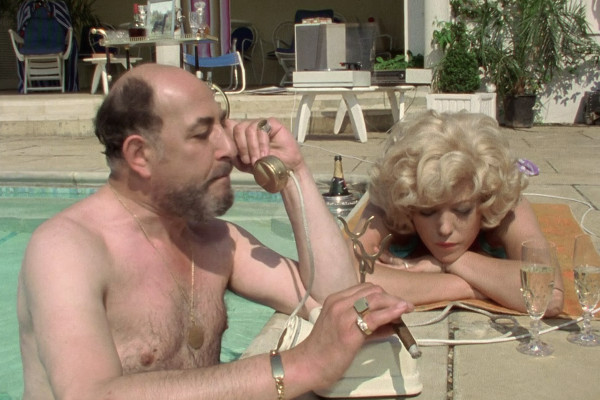
While humour plays a part in the programme, the first series only had one pure comedy episode; series two had three... by the time we get to the final series Morecambe and Wise make an appearance as themselves. Thin Ice was most notable for being screened to journalists to promote the show, with what was then ground-breaking violence in the majority of the series (while seeming tame today) withheld from the newspapers before the public got to see it.
So what we have here is a story that starts with some fairly witty lines (Of one bureaucratic cop, Regan alleges "he didn't join the police, he fell through a hole in the inland revenue.") that gradually gets more and more farcical as a jokey villain is obsessed with his missing dog. All involved do their best, but as excellent as John Thaw can be as an actor, it's worth remembering that in Home To Roost, Reece Dinsdale was the funny one.
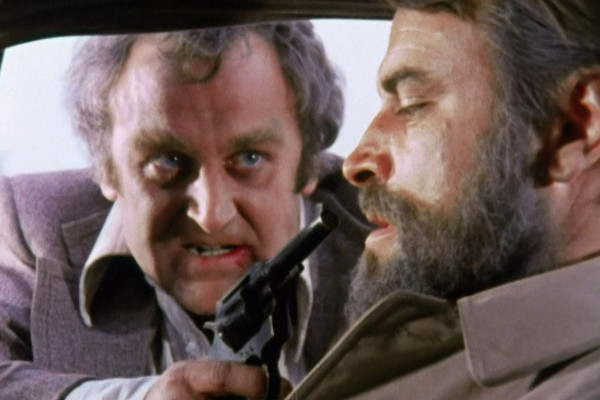
From this point on we have a selection of eleven fine episodes, many of which could be placed in any order, as they're nearly all of a similarly high quality. Series opener Ringer is perhaps genuinely the weakest of the bunch, but still worth a look, if only to show younger viewers that there was once a time when Brian Blessed could actually act and wasn't a bellowing self-parody.
If there's a criticism here it's that the episode is all set-up and very little substance; the Sweeney are after Blessed's criminal organisation and go around getting information from various informants – but the gang are aware they're being tailed and so go around asking the same informants about the Sweeney.
In one of the more outrageous moments of contrivance, Regan and Carter try and get information from a medal seller who specialises in Nazi memorabilia. We'd earlier seen Regan stumbling across some Gurkha medals in his drawer, so he offers to give them to him in trade for information. It's one thing to have a boxful of Gurkha medals in your drawer - to find them the exact same day you need them for a bribe is really pushing it, but you have to admire the show's nerve.
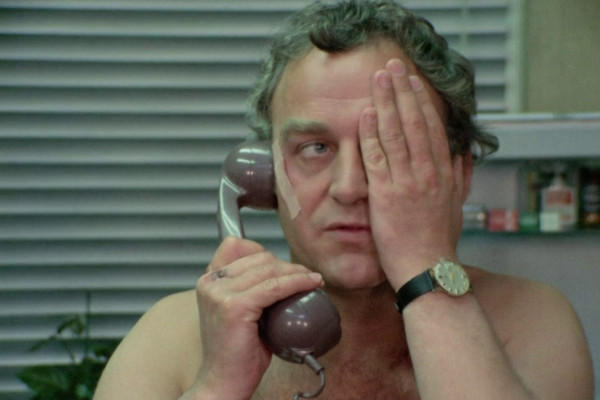
So far this year, the police detective show has been most defined by HBO's new series True Detective. Although the programme was much admired here at The Anorak Zone, one issue I had with it was the gratuitous exploitation of women's bodies in every instalment. Perhaps nothing illustrates how different TV was forty years ago by the fact that there are extended shots of large bare breasts in this episode... and they belong to the star of the show. Truly the 70s were a different time.
Although this is ostensibly a "straight" episode, the topless shot occurs in a medical for Regan, complete with a comedy Welsh doctor and Regan's "ahhhh" met by his Commander on the other end of a phone line with "there's no 'ahs' about it". With such overt humour in a generally serious script, you half expect the aforementioned Reece Dinsdale to walk in and be greeted by an exasperated "Matthew!!" Nevertheless, this is, overall, one of the stronger episodes of the series, the first of six written by Edge of Darkness creator Troy Kennedy Martin – also the brother of The Sweeney's creator.
Jackpot is a tale of a robbery captured on film, where stolen money appears to have gone missing under the watch of the Sweeney themselves. It's striking how innovative the programme was, having this "television within television" narrative in only its second episode – though of course such things seem largely old hat in 2014, where a large majority of programmes specialise in constant post-modern self-reflexivity. Such things should not, of course, be held to the programme's detriment, as not only did it do it first, but it frequently did it better.
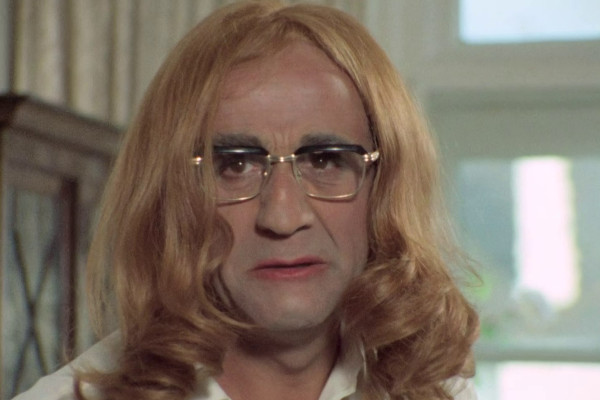
An odd curveball throws any appreciation of this episode into question towards the end. A well made, well shot and engaging storyline showcases the talented Warren Mitchell in a sympathetic role a world away from his famous Alf Garnett character. The guest cast all perform their roles well, and the narrative takes on engaging turns. But then writer Allan Prior gives us a sequence where Mitchell's William Wardle evades capture from the police by dressing up in drag, before being caught by Regan and Carter in full dress, make-up and heels. It still manages to hold together, but not without turning a bit "Dick Emery". As the rest of the episode is so straight, it can best be described, as with a lot of the comedic elements of the programme, as "tonally inconsistent".
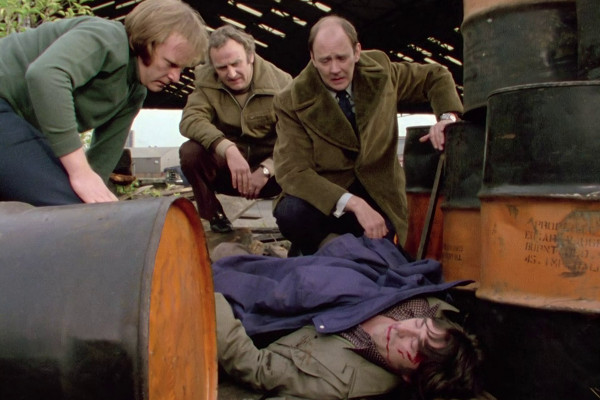
The only other episode written by Allan Prior, an experienced scriptwriter who had many credits to his name and was the co-creator of Z-Cars. However, he'll perhaps be most known to regular readers of this site as the man behind five not particularly well-regarded episodes of Blake's 7. As with that series, his narrative twists would sometimes undermine his genuinely strong ideas, and here we have one of Regan's drivers being forced to work as a getaway driver after his wife has been kidnapped. Rather than go to the police – who, after all, he works for - the driver (Billy Murray) decides to risk his own life by driving the villains headlong into some exploding oil drums and jumping from the car at the last moment, nearly killing himself. While it makes for a more dramatically compelling narrative, it doesn't really stand up to close scrutiny.